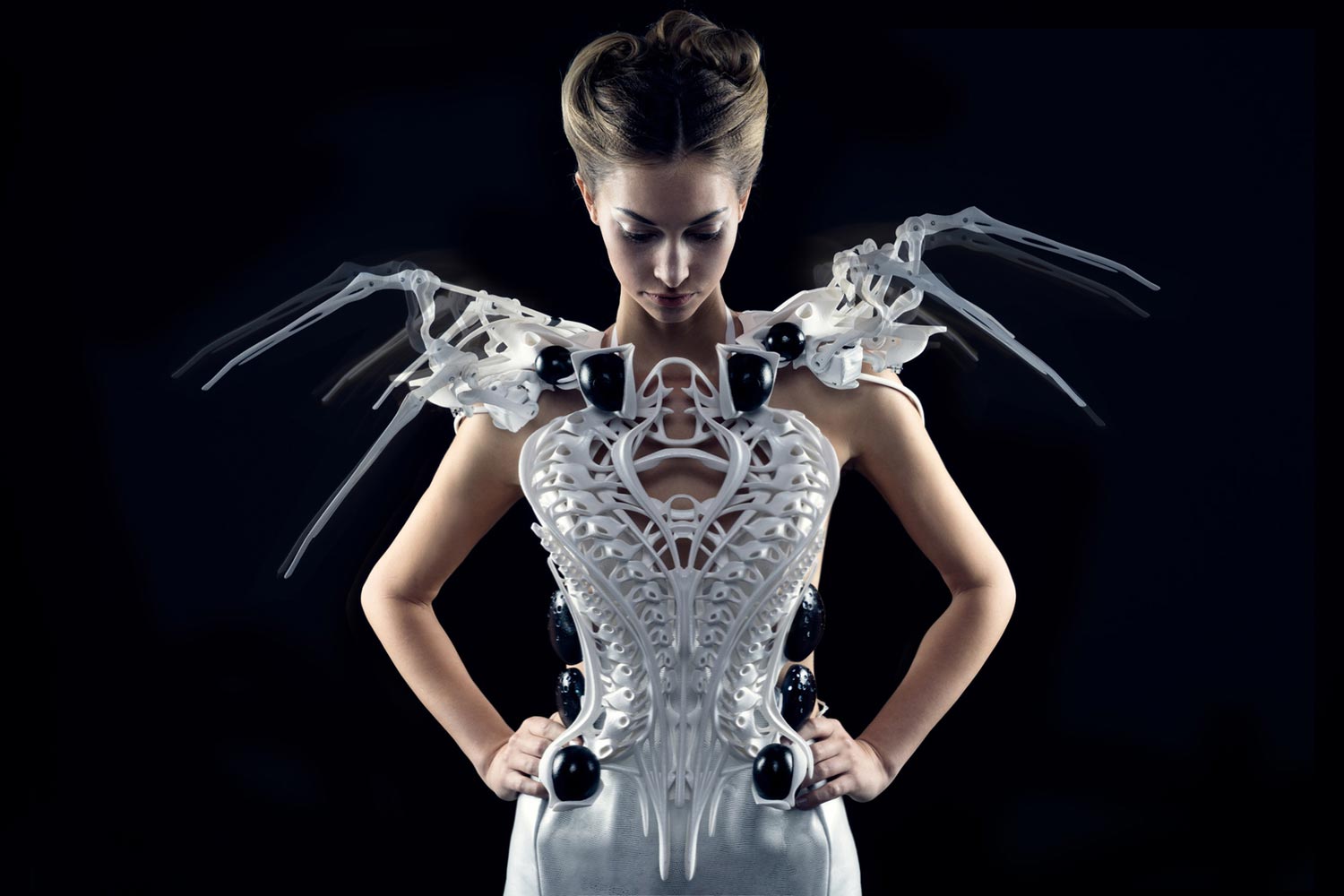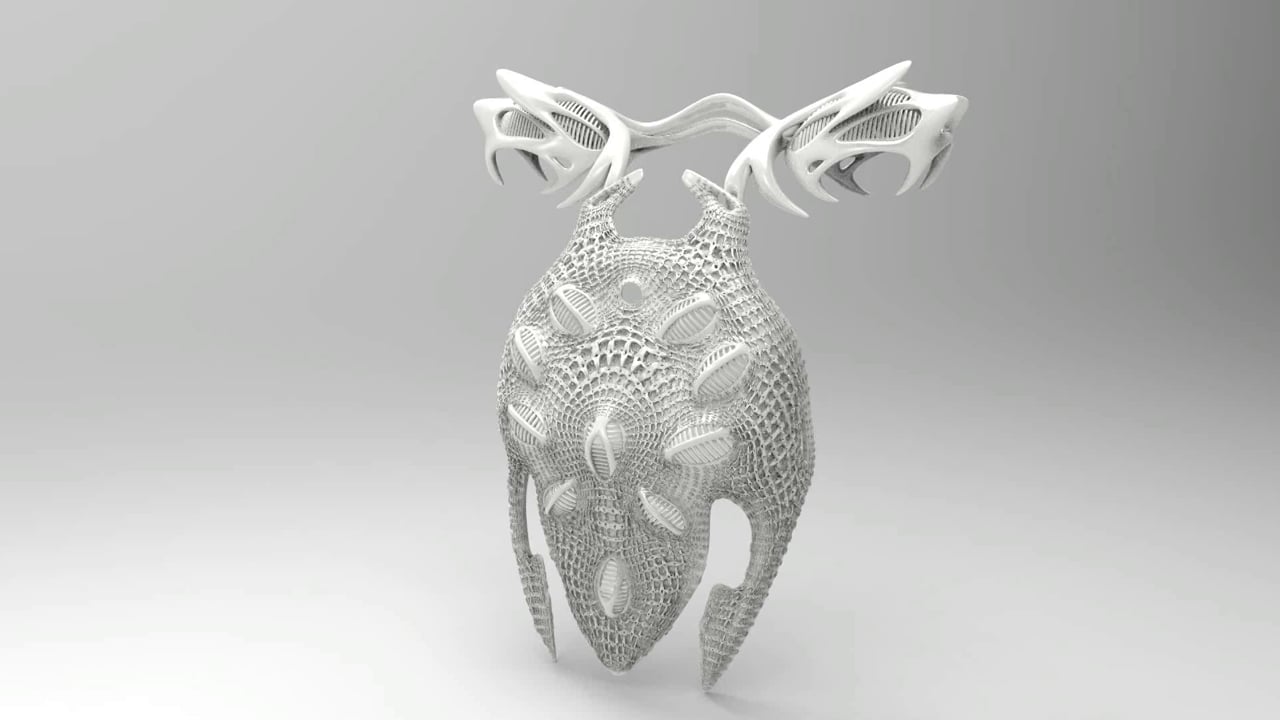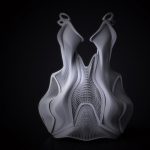Anouk Wipprecht, Miami-based Dutch fashion-tech designer, explores Hi-Tech to develop the user experience in the couture industry. As her design focus is to reflect the wearer’s psychological states, she produces garments intersecting with the body that react by using microcontroller technology and artificial intelligence. The behavior of this kind of fashion technology is basically triggered by human senses affected by various external conditions. Here are a couple of her works presented in this article.
Synapse Dress
Designers: Anouk Wipprecht, Niccolo Casas, Devices Group at Intel
Year: 2014
Client: INTEL
Photography: Jason Perry, Anouk Wipprecht
Synapse dress is one of technologically improved designs by using powered dress logs. With the Hi-Tech sensors, even the complicated bio-signals can be collected as real-time data to alert the High-Power LED series that brightens up to 20 watts. Changing rhythms on the embedded lights act as reactions of the wearer. The creation of the garment is improved in digital platforms (Maya, Zbrush), and then 3D printed by using Thermoplastic polyurethane (TPU) as a base material. The fashion system is embedded in the chest and shoulder part of the design.
Dragonfly 3D Printed Dress | ParametricArchitecture
Dragonfly, is a 3D printed dress designed and fabricated by two Russian artists Oleg Soroko of After Form and Mintsev Kirill . The collaboration between two artists combined two major topics of fashion and parametric design . Designed and 3d printed in Moscow , Russia , Dragonfly consists from two main parts.
Smoke Dress
Designers: Anouk Wipprecht, Niccolo Casas
Year: 2013
Client: VOLKSWAGEN
Photography: Anouk Wipprecht
The Smoke Dress demonstrates a dialogue between the wearer and the environment by producing a smoke veil covering the personal space of the user when it is interrupted by someone else. A microcontroller and proximity sensor technology are improved to trigger a silicon-based smoke system that is back mounted. To fabricate a fully flexible garment with a futuristic image, polyamide and TPU 92A-1 are preferred for 3D printing.
Spider Dress
Designers: Anouk Wipprecht, Philip H. Wilck, Devices Group at Intel
Year: 2015
Client: INTEL
Photography: Jason Perry, Anouk Wipprecht
Spider Dress was developed with proximity and respiration sensors. This animatronic/mechatronic couture allows the wearer to protect her personal space by using mechanical elements. These movable limbs are more apparent in the state of attack to defend the user. On the other hand, the robotic behavior tends to be smoother when there is a less aggressive environment. The fabrication of the dress is made by 3D printing with laser sintering.
Iridescence, Behnaz Farahi’s Interactive Collar | ParametricArchitecture
Created by renowned designer and technologist Behnaz Farahi , the Iridescence is an interactive , 3D-printed , and emotive collar, uses hundreds of actuators and vision-activated technology to follow your gaze and react with life-like behavior. The project was commissioned by the Museum of Science and Industry Chicago for a 15-month exhibition entitled “Wired to Wear” starting from March 21, 2019.
Matrix, Projection Map, and Shield Dresses
Designers: Anouk Wipprecht, Philip H. Wilck
Year: 2015
Client: AUDI
Photography: Anouk Wipprecht
These dresses were created as a part of Audi A4 collection by using the LED technology. The collection was modelled through some software tools (Autodesk Maya and Rhinoceros) and produced using 3D printer system.
The idea behind Matrix Dress is to attract or chase away the people who near the personal space of the wearer. Taking the inspiration from Matrix headlights of Audi automobiles, the fashion-tech uses specific sensors based on ultrasonic range of distance that triggers embedded LEDs of 60-watt power. To have quick results, the sensors measure any approaching person in less than five milliseconds.
The Projection Map Dress was made for self-expression of its user. Drawing attention to the Virtual Cockpit of Audi A4, a projection mapping has been adapted for this couture. The wearer’s state of mind, in terms of togetherness and solitude, reflects on the pattern of light that is projected on the floor and the ceiling.

The Shield Dress was produced with ultrasonic rangefinder sensors to reflect human proximity. Embedded 20-watt-LEDs increase or decrease their brightness depending on the people crossing the personal space.
3D Printing Startups Showcasing Amazing Design | ParametricArchitecture
Today, we think of 3D printing as an advanced technology capable of producing wonders. With close relations, in some cases, to parametric designs, it can produce everything from articles of clothing to major urban structures. Naturally this is in part due to the emergence of startups across various categories of 3D design, which is what we’ll be looking at in this piece.



























































I think the admin of this web page is in fact working hard in support of his site, as here every material is quality based stuff.
Thank you!